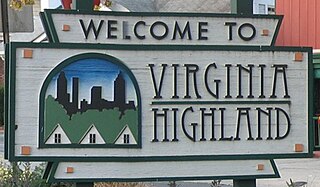



George Francis Willis (1880, Waynesville, North Carolina [1] - July 20, 1932 [2] ) was an American millionaire who made his fortunes with patent medicines.




George Francis Willis (1880, Waynesville, North Carolina [1] - July 20, 1932 [2] ) was an American millionaire who made his fortunes with patent medicines.
Willis attended Bingham Military School in Asheville, North Carolina, and later moved to Knoxville, Tennessee, where he became involved with a patent medicine firm. Willis began to sell and promote the medicines. In 1913 he founded International Proprietaries, Inc., and made a fortune selling a tonic called Tanlac. Although chemists at the time branded it quackery, as it was simply fortified wine with herbs and a laxative, the tonic sold very well nevertheless. Willis sold his firm in 1922 but then made another fortune with Zonite, an antiseptic preparation based on Dakin's solution, widely used in World War I.
In 1922, as head of its finance committee, Willis led a $2 million fundraising drive for Georgia Tech. [2]
Willis was also active in real estate development in the Atlanta area. Willis commissioned the 1917 Druid Apartments at the corner of Ponce de Leon Avenue and Highland Avenue in Atlanta's Poncey-Highland neighborhood, now the site of the Briarcliff Plaza, Atlanta's first shopping center. [3]
In 1924, he purchased the town of Ingleside, Georgia, just east of Decatur and there built the new planned community of Avondale Estates, Georgia. The distinctive Tudor Revival architecture of the town was inspired by a recent trip that he and his wife had taken to Stratford-upon-Avon, England. Willis sought input from internationally known city planners; Avondale Estates was the first documented planned city in the Southeastern United States. [4]
In 1928 Willis introduced a new medicine, Sargon, and became president of the Stone Mountain Confederate Monumental Association. [2]

John Stith Pemberton was an American pharmacist and Confederate States Army veteran who is best known as the inventor of Coca-Cola. In May 1886, he developed an early version of a beverage that would later become Coca-Cola, but sold his rights to the drink shortly before his death in 1888.

Avondale Estates is a city in DeKalb County, Georgia, United States. The population was 2,960 at the 2010 census. It is part of the Atlanta metropolitan area and is near Decatur.

Asa Griggs Candler Sr. was an American business tycoon and politician who in 1888 purchased the Coca-Cola recipe for $238.98 from chemist John Stith Pemberton in Atlanta, Georgia. Candler founded The Coca-Cola Company in 1892 and developed it as a major company.
Spanx, Inc. is an American underwear maker focusing on shaping briefs and leggings, founded in Atlanta, Georgia. The company manufactures mainly pantyhose and other underwear for women and, since 2010, produces male underwear as well. Spanx specializes in foundation garments intended to make people appear thinner or more shapely.

SunTrust Banks, Inc. was an American bank holding company with SunTrust Bank as its largest subsidiary and assets of US$199 billion as of March 31, 2018. The bank's most direct corporate parent was established in 1891 in Atlanta, where it was headquartered.

Virginia–Highland is an affluent neighborhood of Atlanta, Georgia, founded in the early 20th century as a streetcar suburb. It is named after the intersection of Virginia Avenue and North Highland Avenue, the heart of its trendy retail district at the center of the neighborhood. The neighborhood is famous for its bungalows and other historic houses from the 1910s to the 1930s. It has become a destination for people across Atlanta with its eclectic mix of restaurants, bars, and shops as well as for the Summerfest festival, annual Tour of Homes and other events.

Morningside/Lenox Park is an intown neighborhood in Atlanta, Georgia founded in 1923. It is located north of Virginia-Highland, east of Ansley Park and west of Druid Hills. Approximately 3,500 households comprise the neighborhood that includes the original subdivisions of Morningside, Lenox Park, University Park, Noble Park, Johnson Estates and Hylan Park.

Edwin Wiley Grove, commonly known as E. W. Grove, was an American business magnate, entrepreneur, and self-made millionaire. He founded the Paris Medicine Company, creating and producing its most well-known patent medicine products, Grove's Tasteless Chill Tonic and Laxative Bromo Quinine tablets. He later invested in and developed properties in cities in the southern United States, including Atlanta, Georgia, and Asheville, North Carolina.

Fred Loring Seely was an American newspaperman, chemist, inventor and philanthropist.

U.S. Route 278 (US 278) in the U.S. state of Georgia is an east–west United States Highway traversing the north-central portion of the state. The highway travels from the Alabama state line near Esom Hill to the South Carolina state line where it crosses the Savannah River in the Augusta metropolitan area.

Willis Sharpe Kilmer was a patent medicine manufacturer, newspaperman, horse breeder, and entrepreneur.

Briarcliff Plaza, also known as Ponce de Leon Plaza, is a strip mall-type shopping center designed by architect George Harwell Bond and opened in 1939 at the southwest corner of Ponce de Leon Avenue and Highland Avenue in the Poncey-Highland neighborhood of Atlanta. Braircliff Plaza was developed by Relnac Inc., and was proposed to cost $300,000. Construction began after the last home on the block was purchased by Relnac Inc., the Dr. Robin Adair estate, and Briarcliff Plaza opened throughout 1939 with businesses such as Dupree Dry Cleaners, Blick’s Bowling Alley, Holcomb Flowers, the Georgia Fruit & Vegetable Company and Nick Caruso’s Big Place which offered shoe repair, hat cleaning, pressing, repairing and hat cleaning. It was Atlanta's first shopping center with off-street parking. It is anchored by the historic Plaza Theatre and Urban Outfitters. A portion of the historic plaza area was listed on the National Register of Historic Places in 2020.

Willis F. Denny (1874-1905) was an architect active in Atlanta, Georgia around the turn of the twentieth century. He was the architect of Rhodes Hall (1903) and the Kriegshaber House, both listed on the National Register, as well as the demolished Piedmont Hotel (1903).
Dr. Henry Lumpkin Wilson was a prominent Atlanta physician, city councilman, and was active in the city's expansion and development.

Green Buren Adair was a prominent Atlanta cotton merchant who conducted business in Atlanta from the Civil War until the turn of the 20th century. He was a cousin of George Washington Adair, another prominent real estate mogul in Atlanta.
The History of Virginia–Highland, the Intown Atlanta neighborhood, dates back to 1812, when William Zachary bought and built a farm on 202.5 acres (0.819 km2) of land there. At some point between 1888 and 1890 the Nine-Mile Circle streetcar arrived,, making a loop of what are now Ponce de Leon Avenue, North Highland Avenue, Virginia Avenue, and Monroe Drive. Atlantans at first used the line to visit what was then countryside, including Ponce de Leon Springs, but the line also enabled later development in the area. Residential development began as early as 1893 on St. Charles and Greenwood Avenues, must most development took place from 1909 through 1926 — solidly upper-middle class neighborhoods, kept all-white by covenant.

Francis Palmer Smith was an architect active in Atlanta and elsewhere in the Southeastern United States. He was the director of the Georgia Tech College of Architecture from 1909–1922.

Grace United Methodist Church is a Methodist church in Atlanta, Georgia, United States. Originally organized as a mission in 1871, the current church building was designed by Francis Palmer Smith and was completed in 1923.

Eugene Muse Mitchell was an American lawyer, politician, and historian. He served as the President of the Atlanta Board of Education from 1911 to 1912, during which time he eliminated the use of corporal punishment in city schools. He owned a law firm in Atlanta, and was a co-founder of the Atlanta Historical Society. He was married to the prominent Catholic activist and suffragist Maybelle Stephens Mitchell and was the father of Margaret Mitchell, who wrote the novel Gone With the Wind.